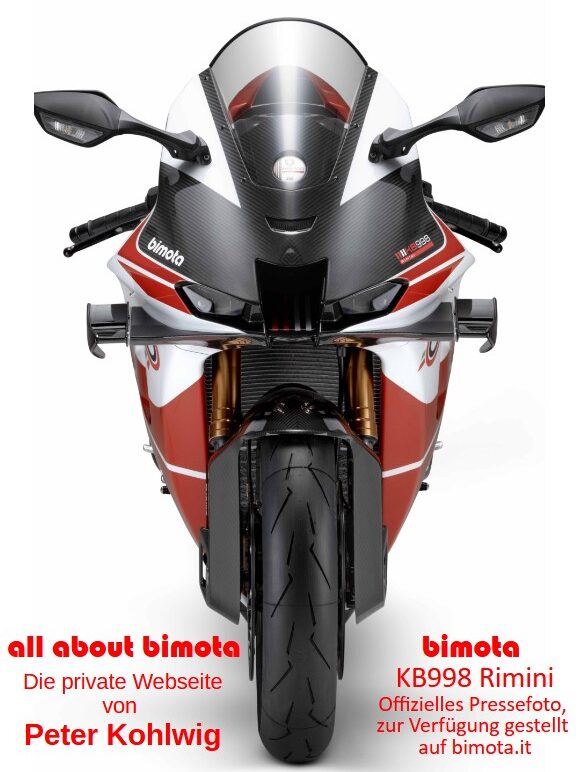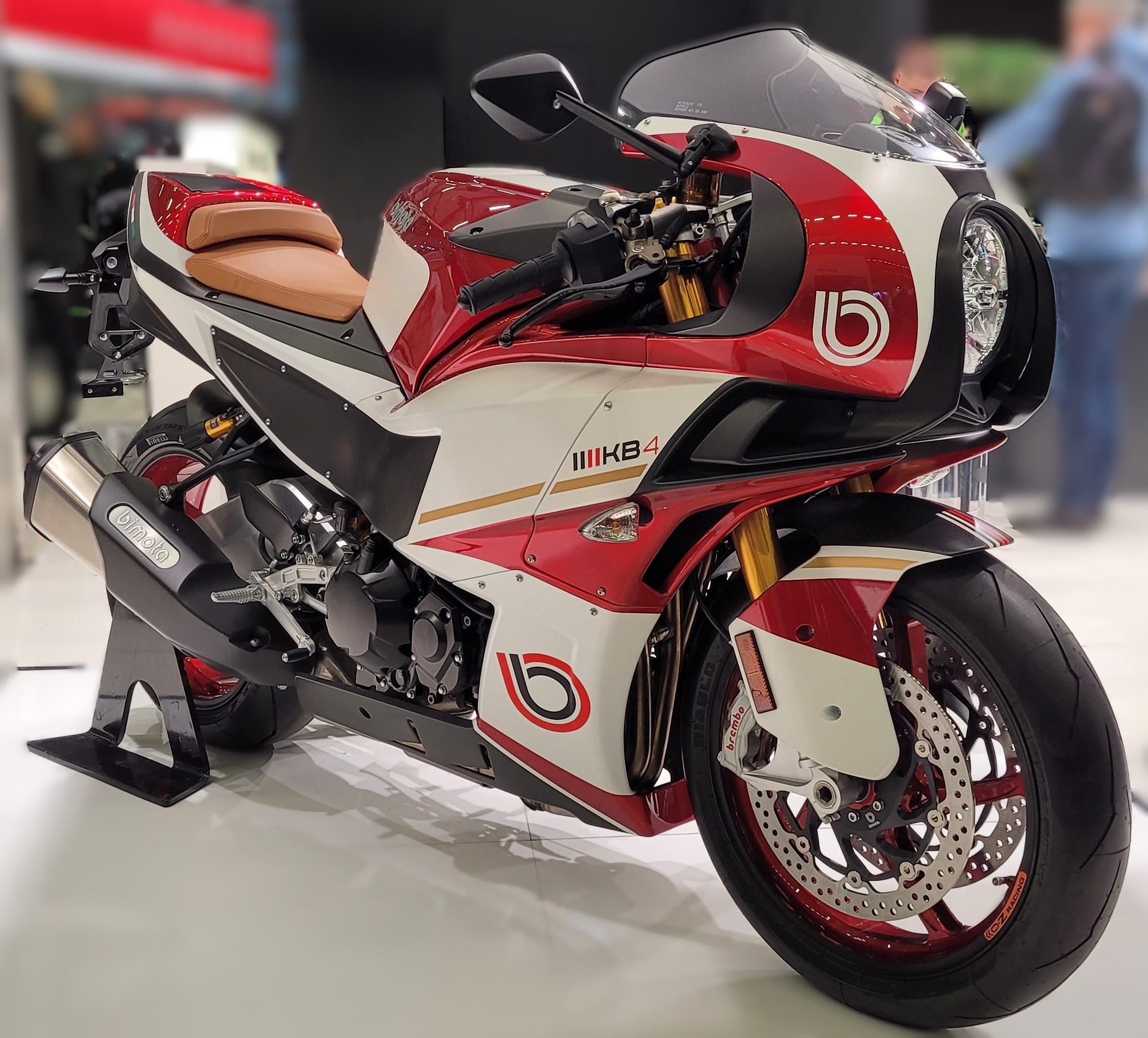
| Designer | Enrico Borghesan | First presentation | Milan 2021 |
| Production period | since 2022 | Production numbers | |
| Power | 104 KW (142 PS) | Displacement | 1043 ccm |
| Topspeed | 250 km/h | Weight | wet 203 kg dry 189 kg |
| Price | 35.700 Euro (2023) | Colours | white / red / carbon with golden stripes |
| Technical Basis | Kawasaki Z 1000 SX |
The KB4 is the second model that Bimota has launched since Kawasaki’s involvement. Its appearance is defined by the extraordinary side air ducts integrated into the fairing and the retro design elements. In the press release, Bimota describes the bodywork designed by Enrico Borghesan as „Vintage Inspired,“ combining
„the classic design of the iconic Bimota motorcycles of the 1970s with the functionality and usefulness of a modern motorcycle.“
The air ducts are necessary because the radiator is installed under the seat. This solution allows for a shorter wheelbase but requires this complex air routing.
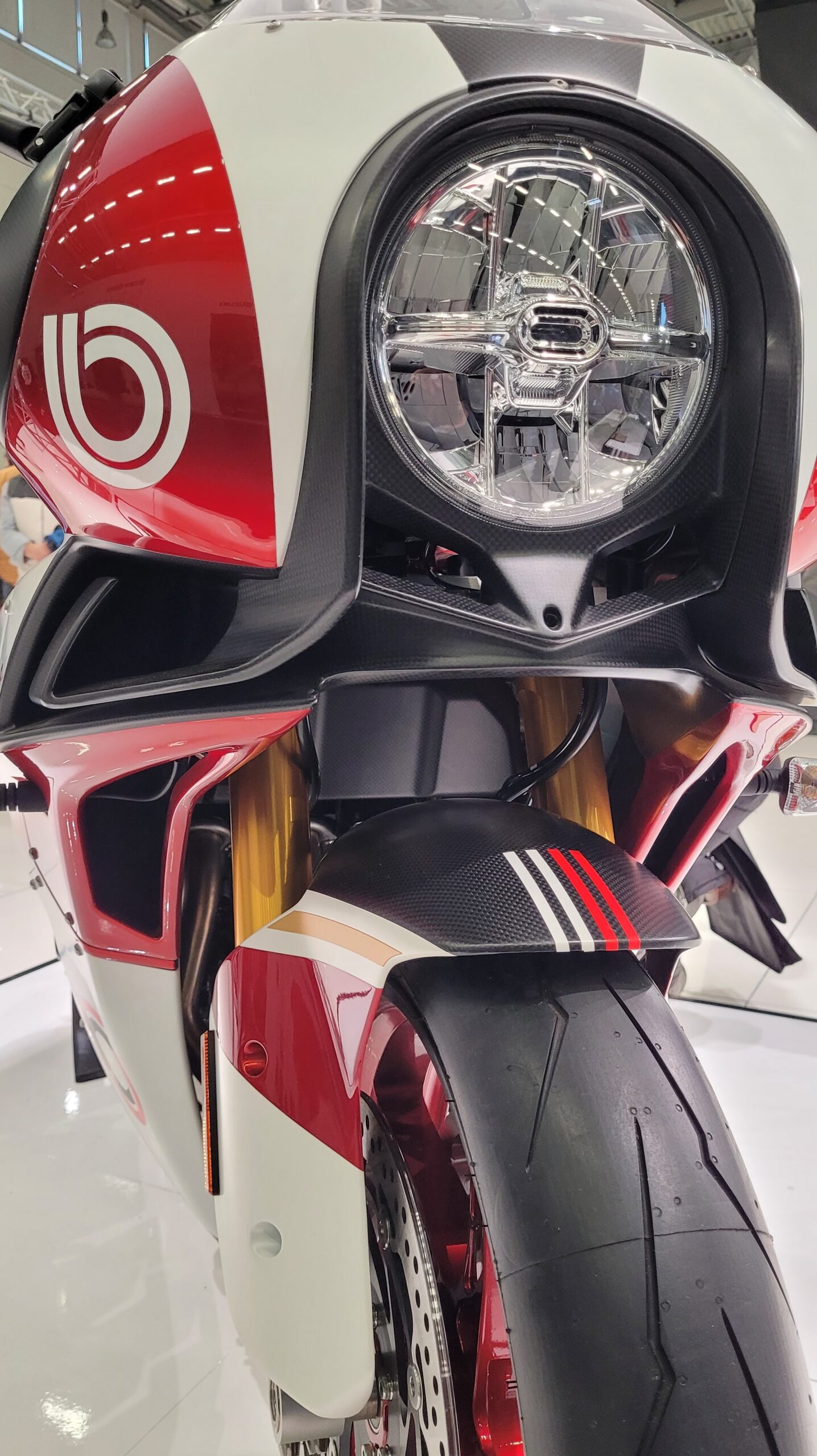
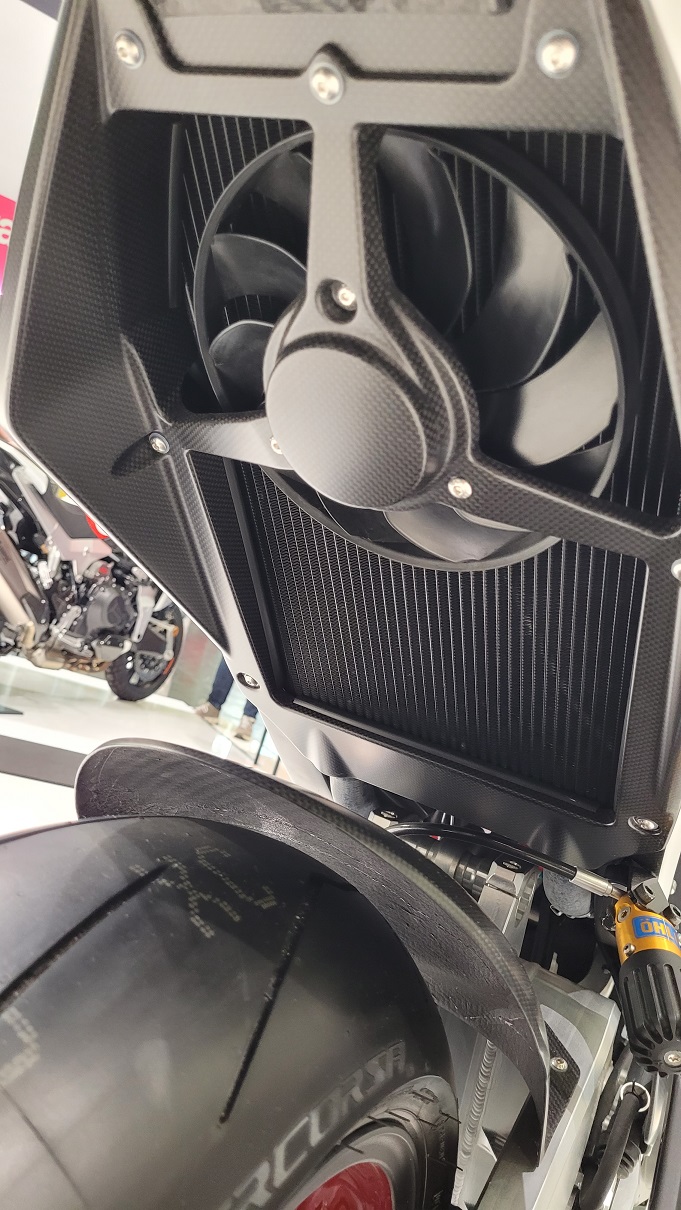
Air intakes for the ducts leading to the water radiator in the vehicle’s rear
There are differing opinions about the design of the KB4. However, there is consensus on its high-quality craftsmanship. Perfect workmanship, plenty of carbon parts, high-quality components, and intricately milled aluminum parts – just as Bimota has been known for decades.
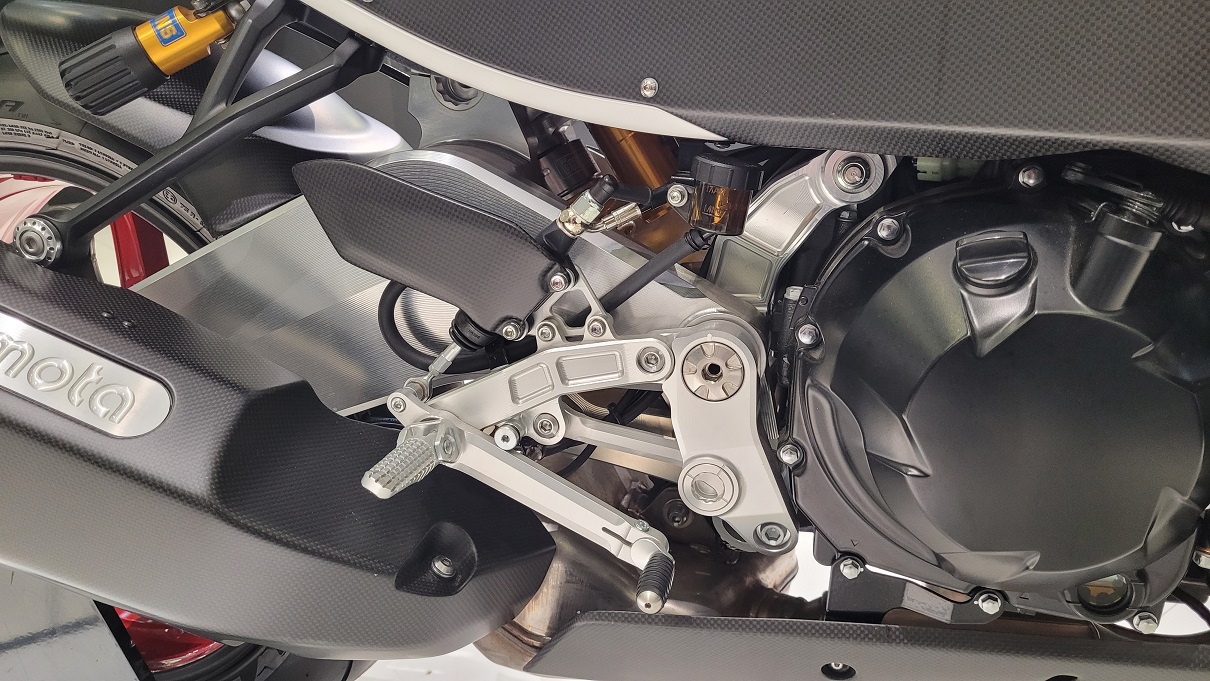
Machined billet aluminum parts, plenty of carbon fiber, and an artfully milled swingarm

Kawasaki switchgear in a luxurious environment
In good old Bimota tradition, the Kawasaki Z1000 SX’s technology receives a new chassis and suspension, featuring a 43mm Öhlins upside-down fork adjustable in compression, rebound, and preload, as well as a central Öhlins shock absorber with the same adjustment options. The KB4 rides on lightweight forged wheels from OZ, with a 6-inch rim and 190/50/17 tire at the rear and a 3.5-inch rim with 120/70/17 tire at the front. Also classic is the Brembo braking system, with two 320mm discs and rigidly mounted radial calipers at the front and a 220mm disc at the rear.
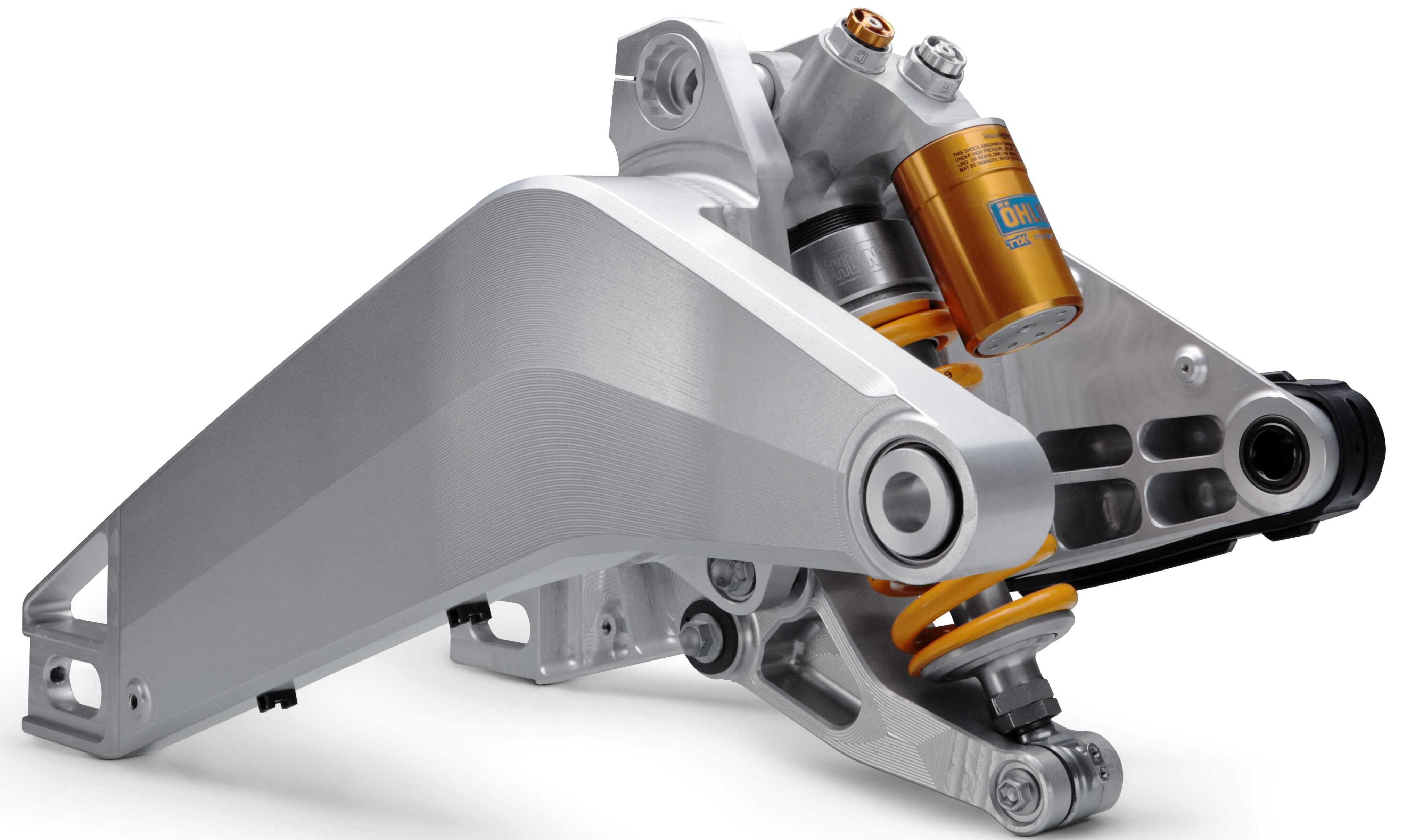
The frame is two-part, with the engine as a load-bearing element. At the front, a high-strength steel trellis frame is bolted on, while the rear consists of milled aluminum plates. The frame, aluminum swingarm, lightweight components, and abundant carbon parts make the KB4 nearly 40 kg lighter than its technical base, the Kawasaki Z1000 SX, from which it also inherits the complete electronics, including the six-axis stability control. It is also evident that the complete exhaust system has been taken from the Ninja. Not particularly attractive, but functional. This allows Bimota to bypass significant hurdles in the homologation of the KB4.
With the KB4, Bimota emphasizes that lightweight construction, high-quality components, and intricate craftsmanship continue to define the brand’s core identity. Bimota remains synonymous with exclusive motorcycles, handcrafted and priced accordingly. The KB4 costs approximately 2.5 times the price of the Kawasaki Z1000 SX.

